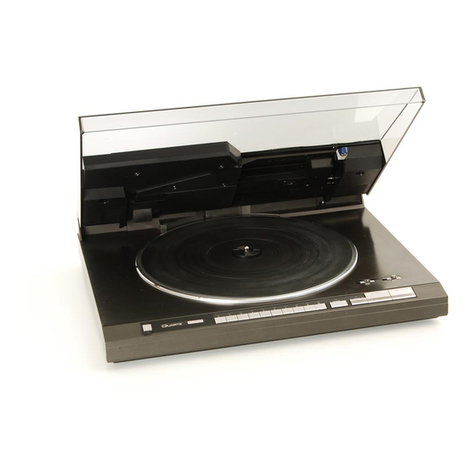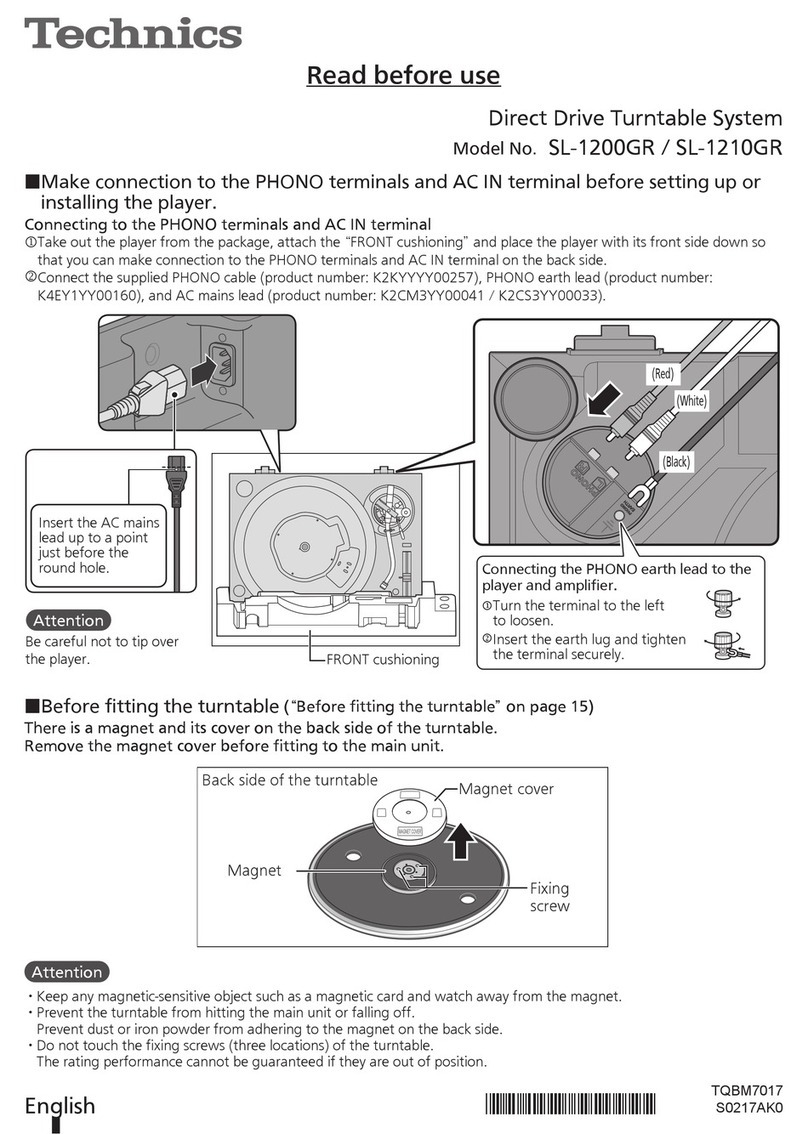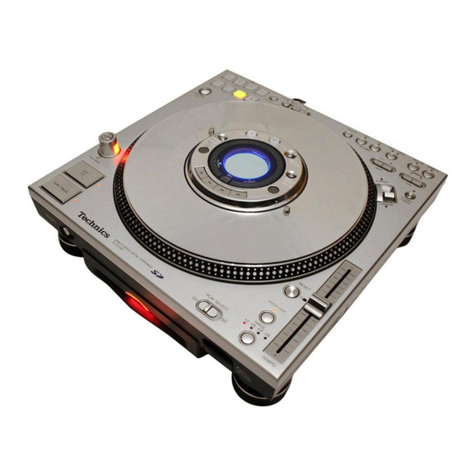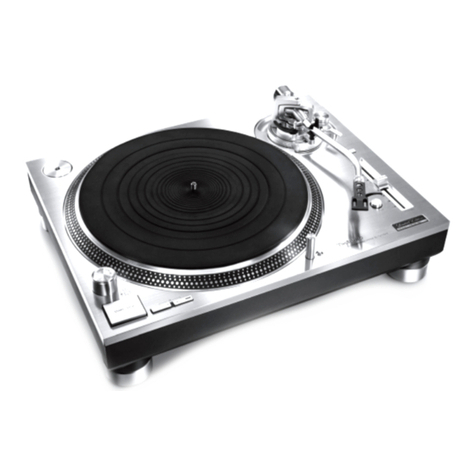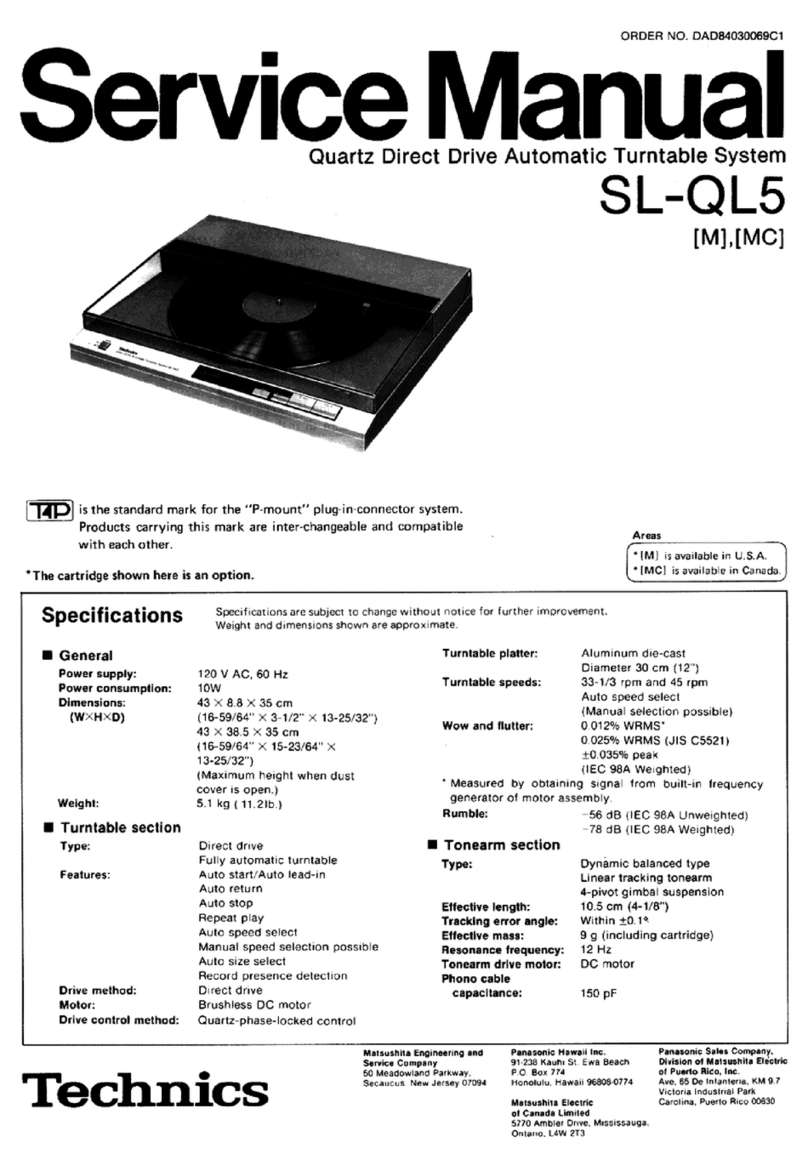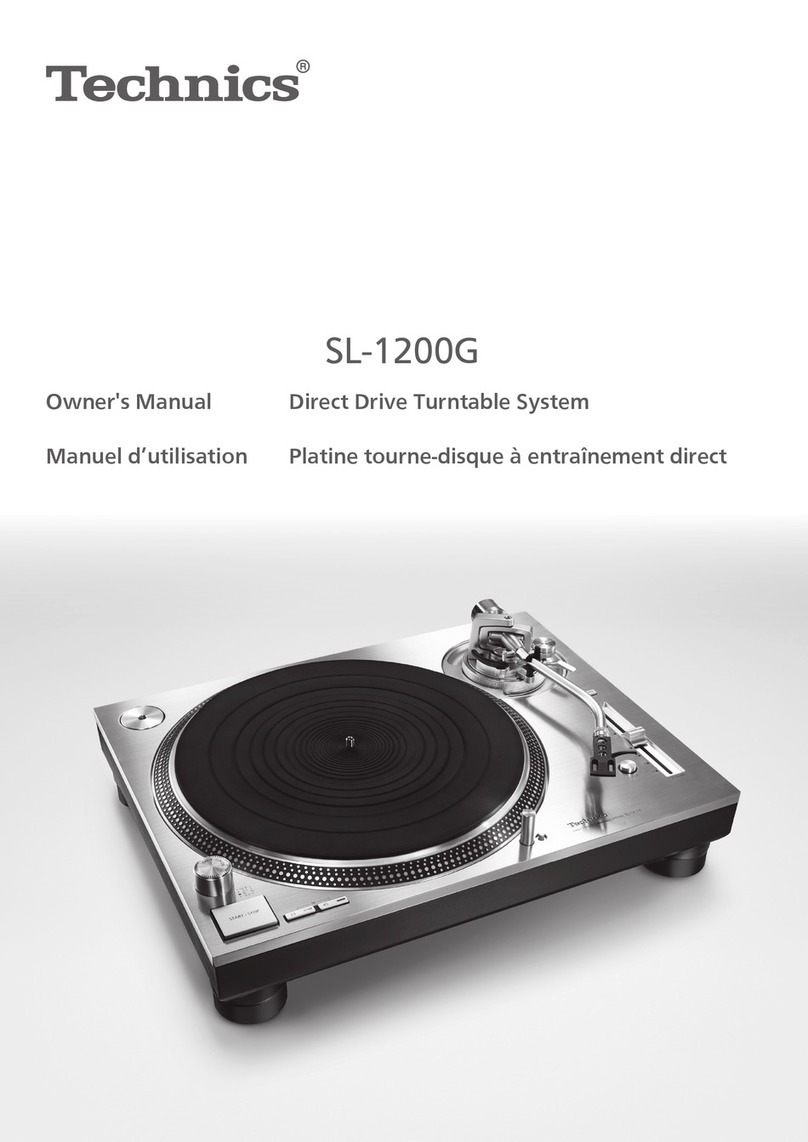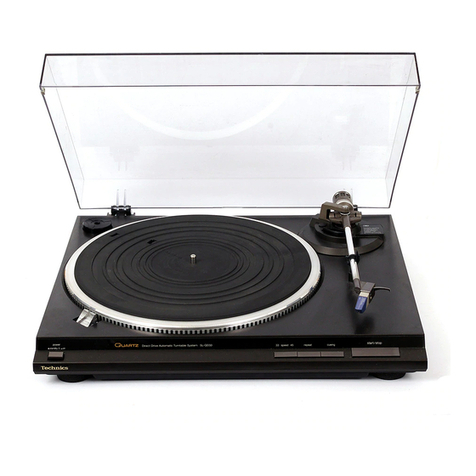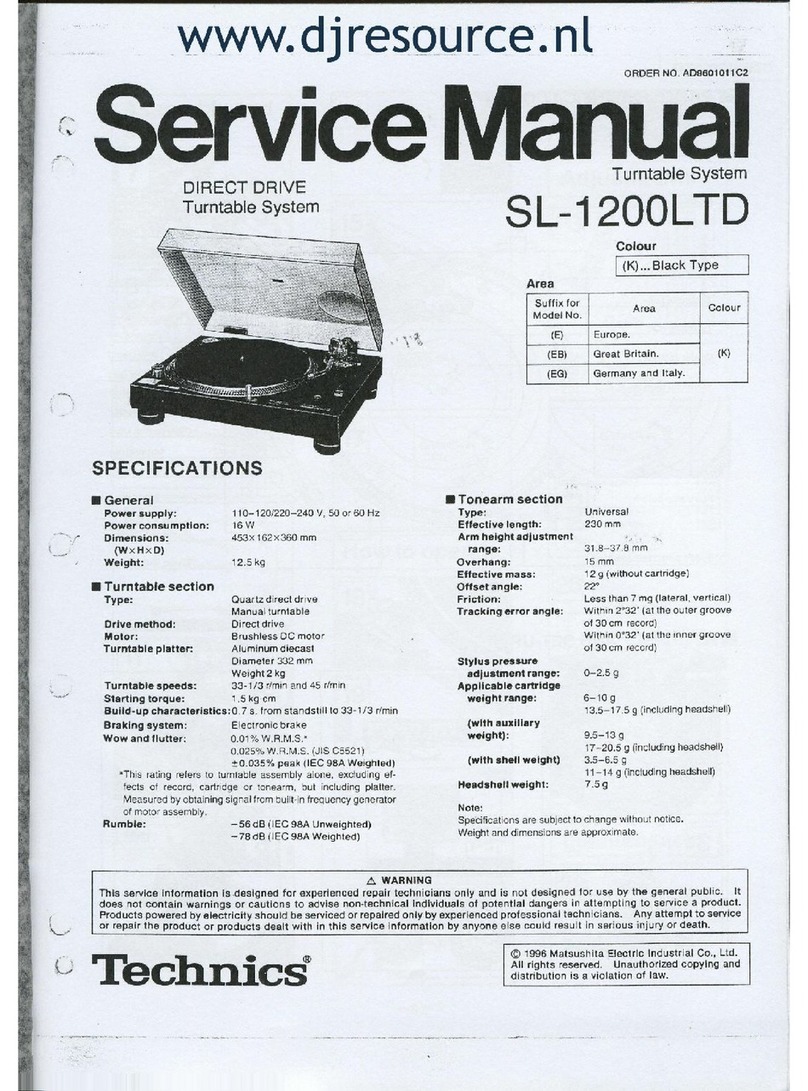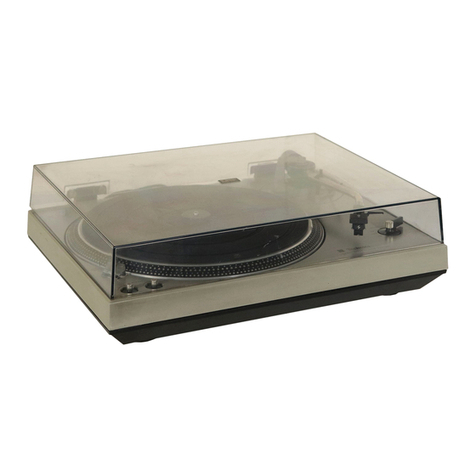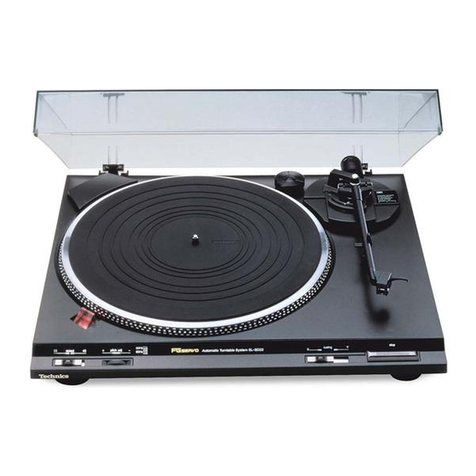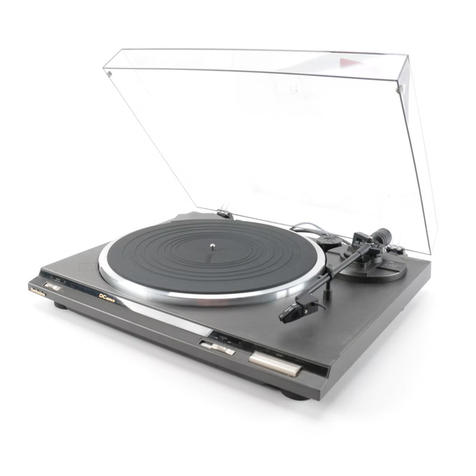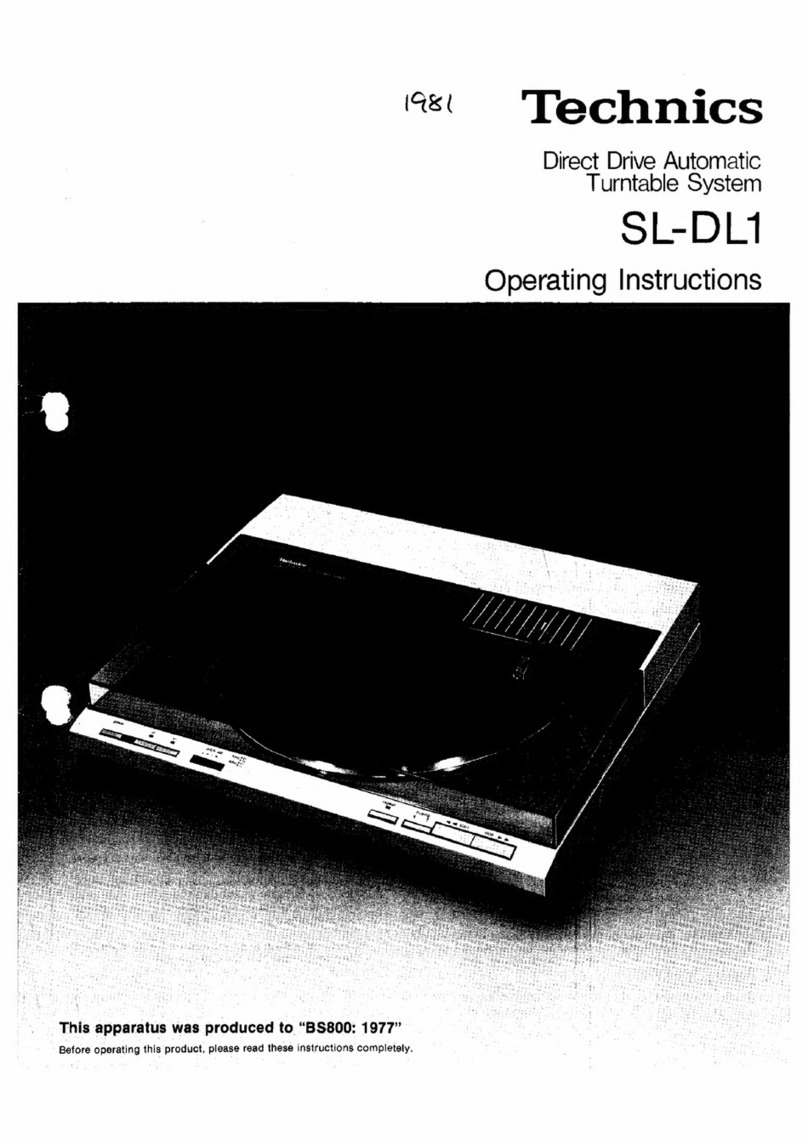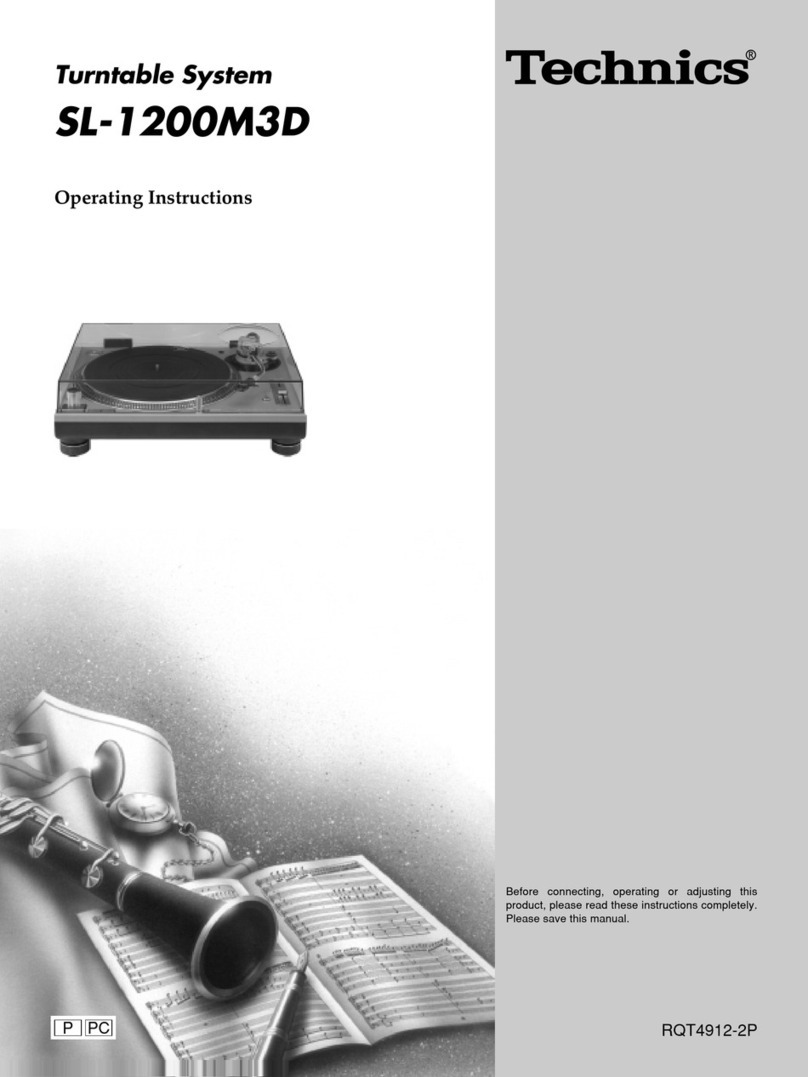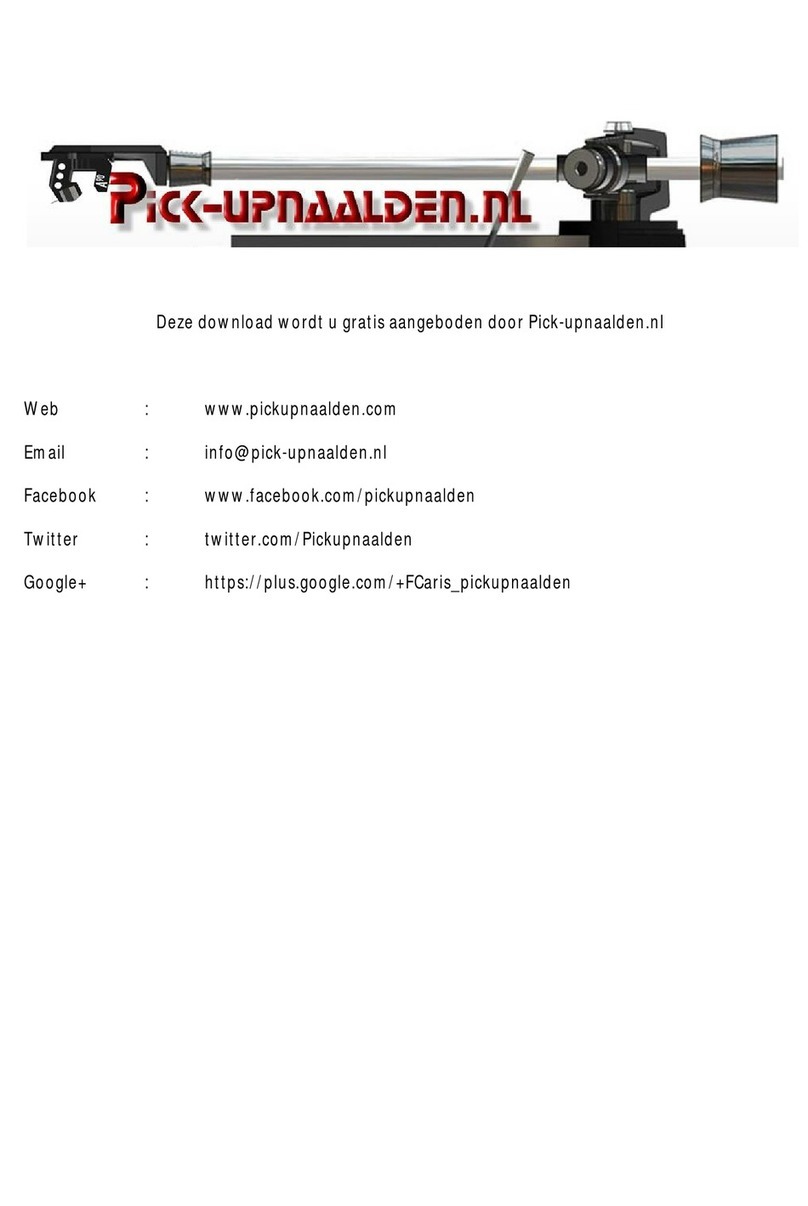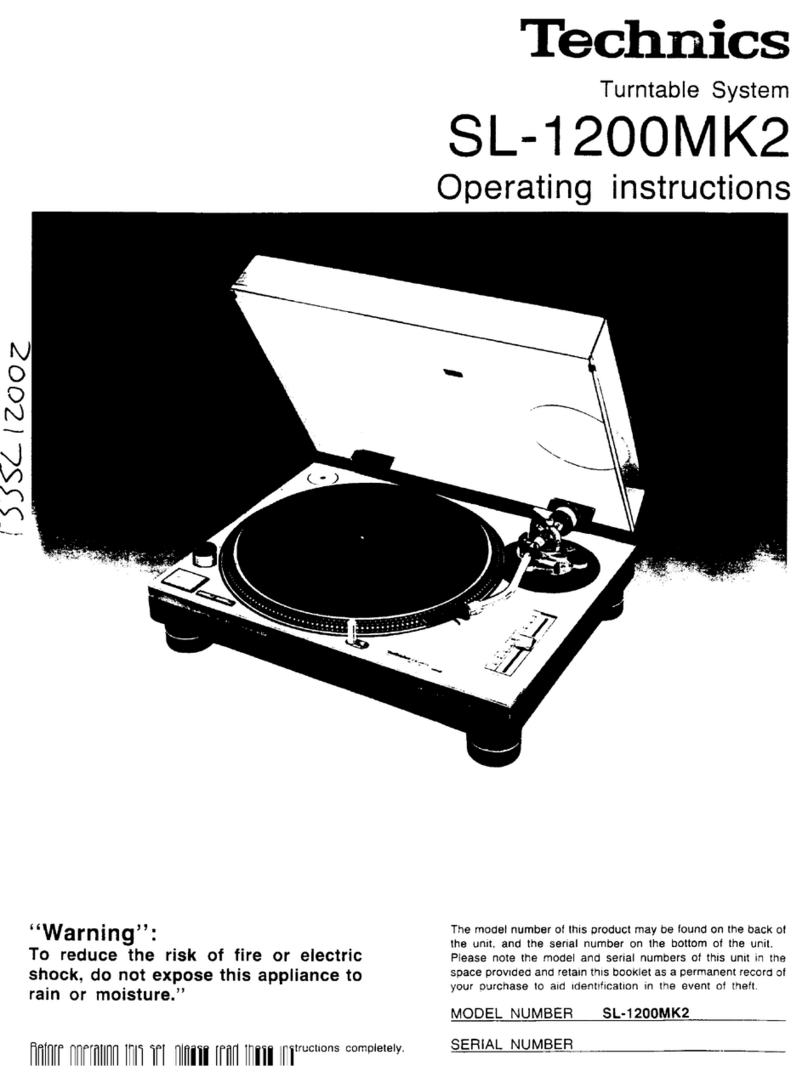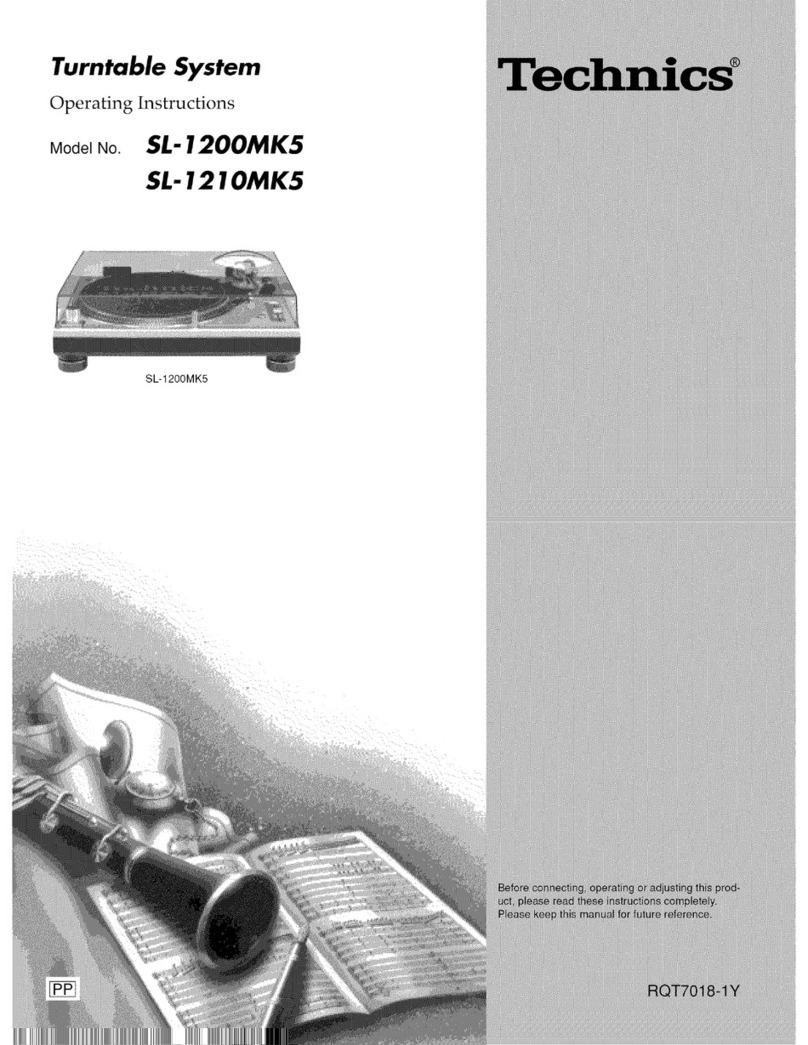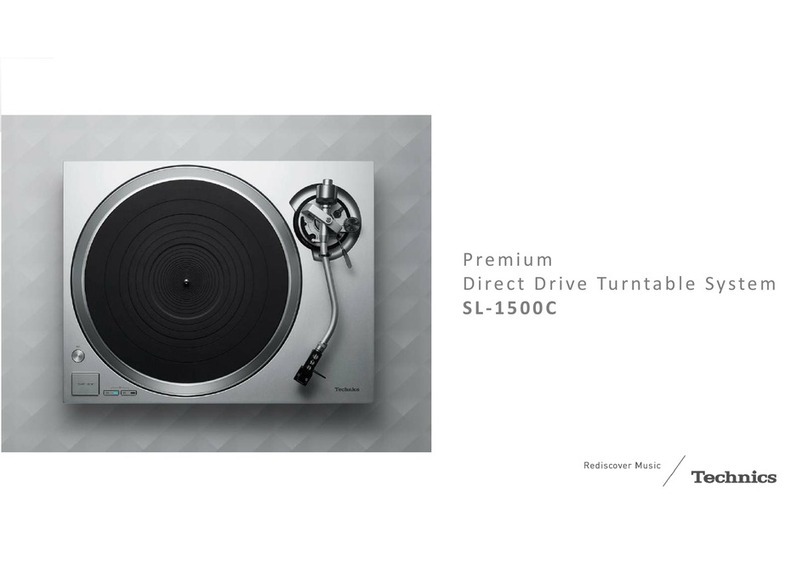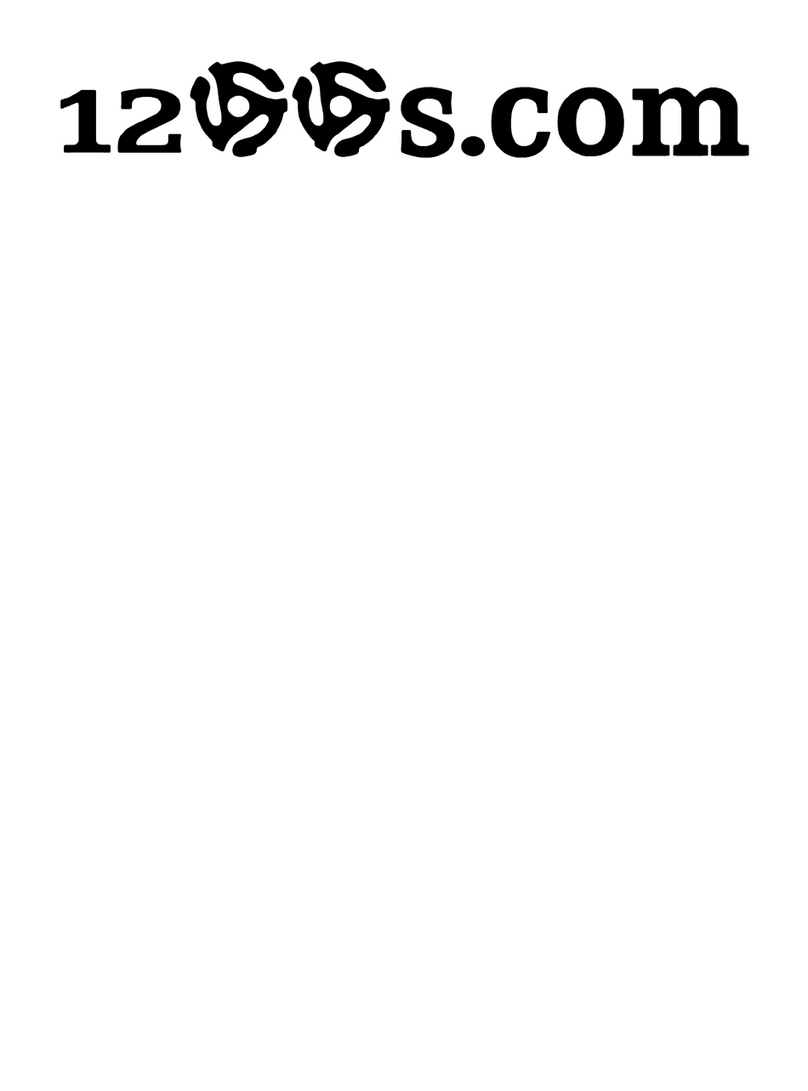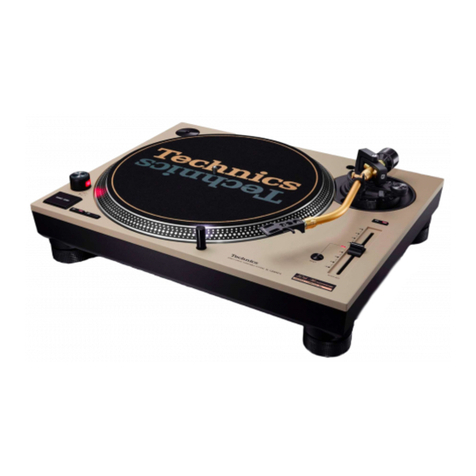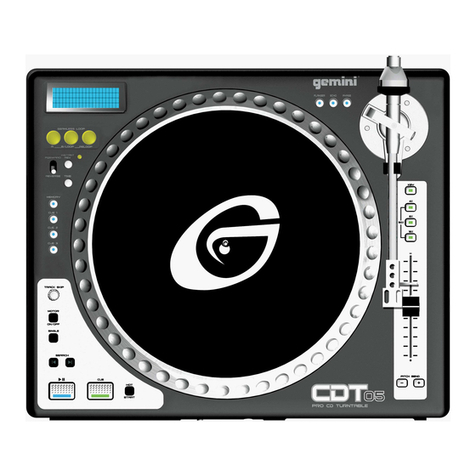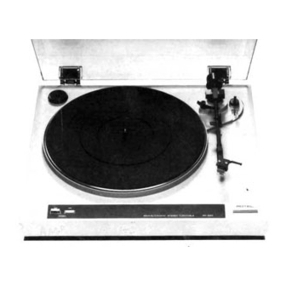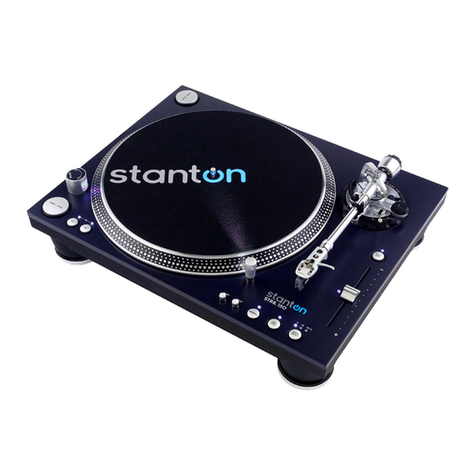
m
MESSUNGEN
UND
JUSTIERUNGEN
sees
Deutsch
see
e
Zu
verwendende
Instrumente
1.
Elektronisches
Gleichstrom-Voltmeter
2.
Oszilloskop
oder
Frequenzzahler
Schritt
Gegenstand
Justiermethode
Auto-Start-Position
1
Uberpriifen,
da&
der
Tonarm
in
der
Startposition
(auf
der
Tonarmablage)
ist.
2
Durch
Drehen
der
Auto-Start-Positions-
Justierschraube
justieren.
Bei
Absenken
des
Tonarms
zu
weit
innen:
Die
Justierschraube
im
Uhrzeigersinn
drehen.
Bei
Absenken
des
Tonarms
zu
weit
auBen:
Die
Justierschraube
entgegen
dem
Uhrzeigersinn
drehen.
(Gerdterickseite)=——>
_
*Fir
die
Justierung
mu
unbedingt
eine
30
cm-
Platte
verwendet
werden.
Justierschraube
=
Tonarm-lifthdéhe
1
Das
Gerat
so
einstellen,
wie
in
Abb.
1
gezeigt.
2
Den
Netzschalter
auf
ON
stellen
und
die
Starttaste
driicken,
um
den
Tonarm
nach
innen
zu
bewegen.
3
Die
Lifttaste
driicken,
so
da&
der
Abstand
zwischen
der
Tonabnehmer-Nadelspitze
und
der
Fiihrungsschiene
27.7
mm
betragt.
Um
den
Abstand
zu
vergroBern....
die
Justierschraube
entgegen
dem
Uhrzeigersinn
drehen.
Um
den
Abstand
zu
verkleinern....
die
Justierschraube
im
Uhrzeigersinn
drehen.
Tonabnehmer
Justierschraube
Tonarm-Reibungs-
winkel
Das
Gerat
so
einstellen,
wie
in
Abb.
1
gezeigt.
Den
Netzschalter
auf
ON
stellen
und
die
Starttaste
driicken,
um
den
Tonarm
nach
innen
zu
bewegen.
Die
Reibungswinkel-Justierschraube
drehen,
bis
die
Armmitte
mit
der
Justierschraube
V-Kerbe
am
Liftbalken
itbereinstimmt.
Gegenstand
Justiermethode
Servo-Verstarkungs-
und
Kompensations-
Spannung
Das
Gerat
so
einstellen,
wie
in
Abb.
1
gezeigt.
Das
elektronische
Gleichstrom-Voltmeter
an
TP315
(Q306)
Basis
oder
Anschlu8
CN301
Stift
2
und
TP3
(Masse).
Den
Netzschalter
auf
ON
stellen
und
die
Starttaste
driicken,
um
den
Tonarm
nach
innen
zu
bewegen.
Den
Tonarm
ganz
nach
rechts
stellen.
VR501
dann
so
einstellen,
da&
die
Spannung
3.6V
betragt.
(Servo-Verstarkungs-Justierung)
Den
Tonarm
in
die
Mitte
stellen
und
iiberpriifen,
da&
die
Ausgangsspannung
1.8V
betragt.
Falls
die
Spannung
nicht
1.8V
betragt,
die
Platinen-Befestigungsschraube
Idsen
und
die
Platine
mit
einem
Schraubenzieher-
nach
links
oder
rechts
bewegen,
bis
die
Ausgangsspannung
1.8V
betragt.
Nach
der
Justierung,
die
Platinen-Befestigungs-
schraube
wieder
festdrehen.
Mitte
(Kompensationsspannungs-Justierung)
(1.8V)
(~~)
Uhrzeigersinn
Platinen-Befestigungsschraube
(3.6V)
>
Schraubenzieher
——,
Entfernen
sie
die
Etikette
DB
[VR501
Zeitgeberfrequenz
Drehzahl
Das
Gerat
so
einstellen,
wie
in
Abb.
1
gezeigt.
Das
Klebband
vom
Gehdauseschalter
entfernen.
Mit
einem
Klemmenkabel
0.4.
TP7
(Q3
Emitter)
mit
TP326
(1C301
Stift
14)
verbinden.
Das
Oszilloskop
oder
den
Frequenzzahler
an
TP316
(1C301
Stift
4)
anschlieBen.
Den
Netzschalter
auf
ON
stellen.
VR301
so
justieren,
da&
der
Ausgangswellenform-
Zyklus
40us
+
2us
betragt.
Ebenfalls
VR301
so
justieren,
da&
die
Ausgangsfrequenz
25
kHz
+
1.25
kHz
betragt.
40us
*
2us
Frequenz:
25
kHz
+
1.25
kHz:
Das
Gerat
so
einstellen,
wie
in
Abb.
1
gezeigt.
VR202
Eine
17
cm-Platte
abspielen.
gee
VR202
drehen,
um
die
Drehzahl
auf
die
Nenndrehzah!
Schneli©
Langsa
zu
justieren
(45
U/min).
Eine
30
cm-Platte
abspielen.
VR201
drehen,
um
die
Drehzahl
auf
die
Nenndrehzahl
zu
justieren
(33-1/3
U/min).
Anmerkung:
Unbedingt
zuerst
45
U/min
justieren.
